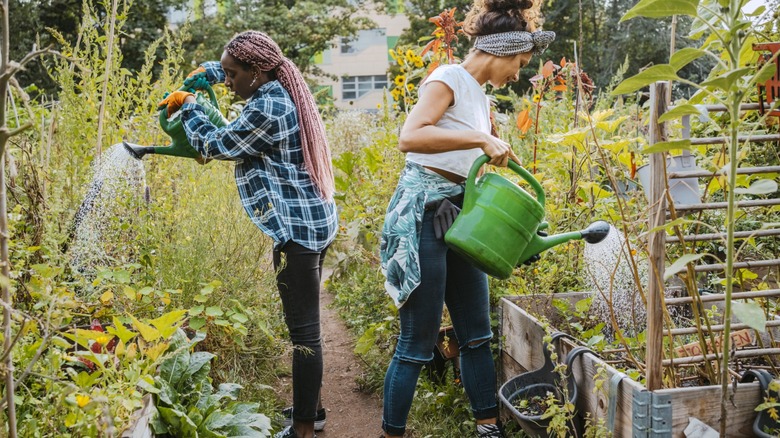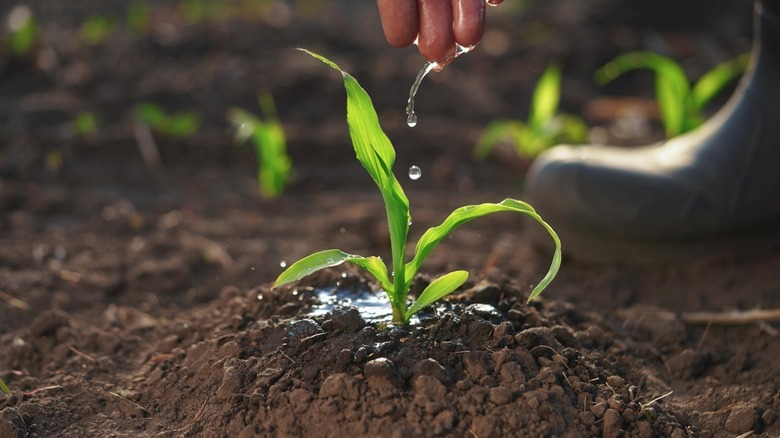Here's How Often You Should Be Watering Your Vegetable Garden
Just like you need tasty vegetables to eat, your garden veg needs water to thrive. If you've been wondering how often you should be watering your plant babies, you may be frustrated to learn that the answer is a wishy-washy "it depends." As a very general rule of thumb, watering once or twice a week is mandatory, but the savviest gardeners keep an eye on their plants and test the soil regularly to determine their needs.
A host of factors can impact how and how often you should water your garden. For instance, the type of soil is a factor. Sandy soil will drain quickly and needs more frequent watering, while denser, earthier soils may be able to hold onto water for as long as a week. What plants are you growing? Some plants need as little as half an inch of water per week, while others need as much as two inches, which is a considerable difference. There's a clever reason to plant basil and tomatoes together in your garden, but they have different watering needs, with basil needing less moisture.
The current temperature and rainfall in your area also play a big role in your watering schedule, as more sun and heat will dry out the soil faster, while more rain will reduce the need for manual watering. The smart gardener won't adhere to a strict schedule, but stay in touch with their garden's condition to judge watering needs.
Knowing how to water is just as important as when to water
Keep in mind that it's the roots of plants that require water, and not the leaves. A lot of people water plants by squirting or pouring water over the top, when effective watering is done with the source of the water connecting with the base of the plant(s). Ideally, you should be measuring how much water you give your vegetables, but, if you don't — like many busy home gardeners — be aware that the majority of folks err on the side of underwatering.
The best time to water is in the morning, so that the soil has all day to slowly dry out. Watering slowly is better than dumping tons of water at once, so that you can constantly assess the condition of the soil. You want the plant to be thoroughly soaked, but you don't want to wash off dirt or waterlog the plant. Going out of town? We love the wine bottle watering hack to safeguard your garden.
Dry soil and crispy leaves are sure signs that your plants are parched, but make sure to observe the signs of overwatering as well. Limp, droopy, yellowed leaves are a sign that your plant has too much moisture. You may also see your growing vegetables turn pale from too much water inside them. If you are growing root vegetables, like onions and potatoes (which you shouldn't be storing together post-harvest), you may find them rotten and mushy underground if the soil has been overwatered.

